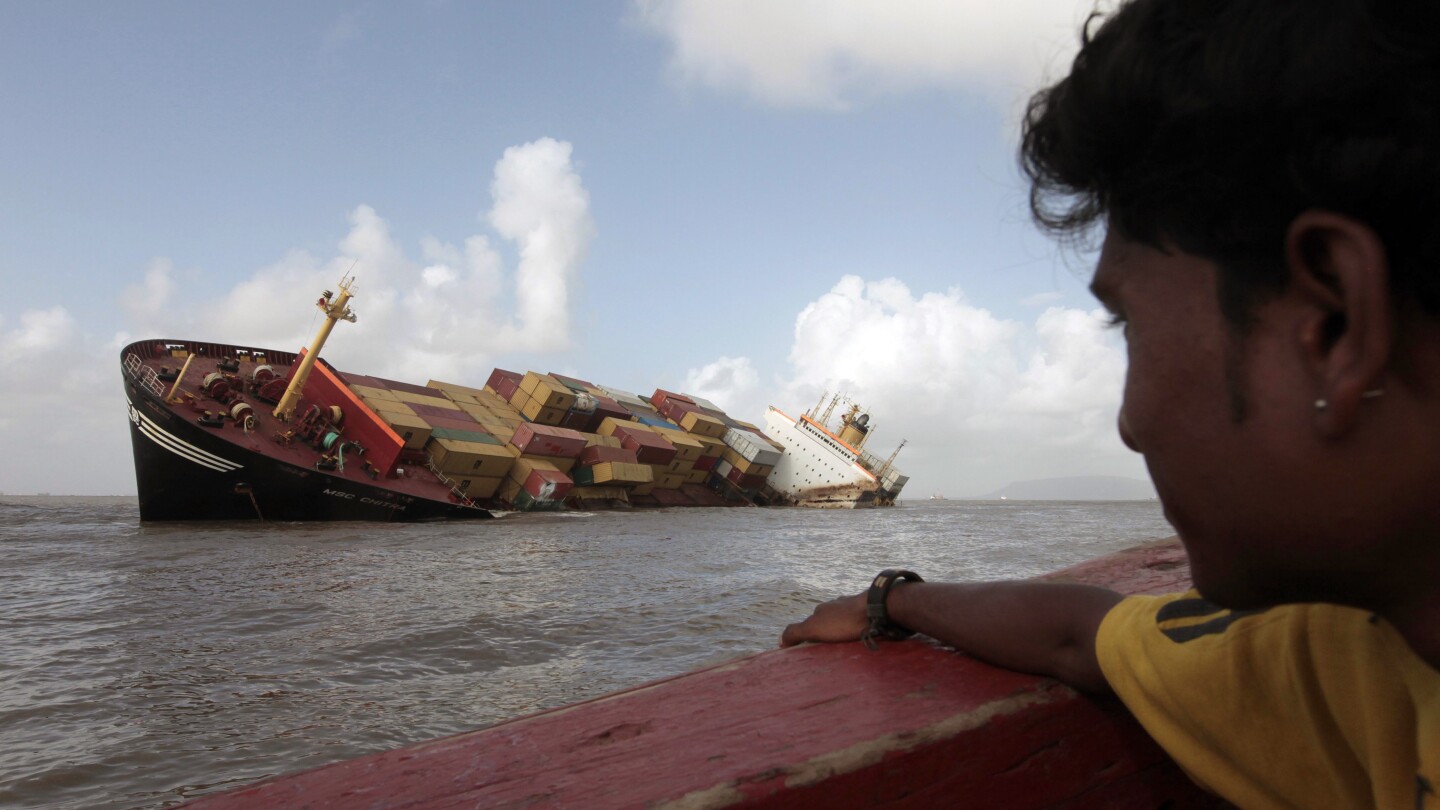Most sunken containers — some still sealed, some damaged and open — are never found or recovered.
The Coast Guard has limited powers to compel shipowners to retrieve containers unless they threaten a marine sanctuary […]
That’s BS. Where I live, if someone steal my car and drive it into a lake/river, I’ll be help responsible for recovering the car, and in practice my car insurance would do it on my behalf.
The shipping company or the container’s owner should have similar responsibilities. The average container is a larger risk to the environment than the average car.
Garfield phones happen. Beware the garftide.
Cargo ships can lose anywhere from a single container to hundreds at a time in rough seas
D:
Much of the debris that washed up on Lewis’ beach matched items lost off the giant cargo ship ONE Apus in November 2020. When the ship hit heavy swells on a voyage from China to California, nearly 2,000 containers slid into the Pacific
Court documents and industry reports show the vessel was carrying…hazardous goods: batteries, ethanol and 54 containers of fireworks.
D:<
Ironically the hazardous (to people) goods may well be better for the ocean than most of the rest. Ethanol should disperse well enough and not cause much issue. Fireworks are mostly cardboard. Still a horror show though.
Fireworks are mostly cardboard.
Cardboard, and… black powder and various metals or salts as colorants.
They’re probably not a catastrophe, but they’re certainly not helping the environment.
What do you mean they don’t just have some tracker on them? What??
These aren’t tech companies, and they try to keep costs as low as possible
No, that’s not why.
I mean, it wouldn’t be cheap, but it would also be utterly nonsensical. So you put a tracker on a container and it sinks somewhere. Then what? First of all, this would have to be a satellite device (costly per container, then consider that thousands that fit onto a single ship), which needs sensors to detect it’s going overboard and then send out its position before it’s submerged. Maybe something communicating with the ship instead of satellites would be a little cheaper, but it’s equally pointless, because the container wouldn’t sink in a straight line and burst open long before it reaches the bottom.
Average ocean depth is 3,682 meters (12,080 feet). Nobody will go on a costly underwater expedition using one of the maybe ten or twenty civilian submarines on the entire planet (each worth tens of millions) that can handle this kind of depth without imploding to recover some soggy Chinese fast fashion garbage or crushed iPhones (because the pressure down there is about 366 times as much as at sea level - I don’t think Apple rates their devices for that). Even if you do, you’d need a lot of trips picking up future landfill fodder with a little robot arm to get even close to getting all of the up to around 25 tons of former cargo.
Nobody will go on a costly underwater expedition […] to recover some soggy Chinese fast fashion
If there’s such a mandate, there would be insurance to cover against such cost. The insurance premium might decrease the amount cheap fast fashion that gets shipped around the world.
The cost might be prohibitive for shipping companies, but that’s not a reason NOT to have them cleanup the mess they’re creating.
Even if you do, you’d need a lot of trips picking up future landfill fodder with a little robot arm
- Attach salvage air bags to the container
- Inflate bags using air canisters
- Recover the container on the surface water
Alright, I was talking about the content of the containers, you are talking about the containers themselves. Given that the content is far more likely to be hazardous to the environment than a steel box (the worst part about it would be the paint and lubrication of the hinges - the rest can just harmlessly rust away), there’s a reason for why I ignored the containers altogether.
To entertain what you’re suggesting: 1,480 containers are lost on average per year. Let that one sink (in) for a minute. To the oceans, this really doesn’t matter given how massive they are, but recovering even a handful of them would be a logistical nightmare. Those cute salvage bags you linked to can lift loads far in excess of your average shipping container - but not at average ocean depths: Most are meant for depths of no more than 50 meters, because that’s the limit for most divers, which you need to attach these things to whatever you’re trying to lift up. Those things you linked to aren’t even rated for that, they are pretty much limited to surface use. Deep sea diving is a thing, of course, but first of all these guys are busy elsewhere (oil rigs, underwater cables, military divers, you name it) and they could not operate at the depths most containers are lying at either. The other issue is the pressure that needs to be overcome. Imagine the kind of equipment necessary to inflate something that deep underwater. Imagine making that kind of equipment work reliably (or at all) underwater. You’d have an easier time building equipment for space. Since I’m not in the biz, I’ve only ever heard of one company in the entire world that has a solution that can lift heavy equipment at these depths, which they used to bring a large piece of the Titanic up. The US Navy has a fancy crane (FADOSS) that would perhaps be more practical for this, but I would assume it’s being kept in reserve for when the next Russian or Chinese military sub sinks in international waters.
Which brings us to the real issue: Even with all of the insurance money in the world, you can’t just materialize a hundred or more submarines or deep sea cranes and the highly specialized crews and ships to operate them for this kind of operation, talent that is such high demand, it would be immediately snagged up for much more worthwhile scientific, commercial and “other” endeavors.
Granted, all of this is a very uneducated opinion by someone who has surface (heh) level knowledge of a billion things and more in-depth (third unintentional pun) knowledge of only a tiny fraction of that, but still. I love the thought experiment nature of this discussion though.
1,480 containers are lost on average per year
That’s a good point, but this go toward both arguments:
- Salvaging so many containers looks unrealistic,
- A mandate to salvage lost containers would be an incentive to better secure and handle containers, thus decreasing the number of lost containers.
The incredibly high pressure on the ocean’s floor would probable make the air bag solution impractical, just as you said. I’m embarrassed for not thinking about this.
The point is to salvage the container’s content, not necessarily the container themselves. I suggested bringing the whole things to the surface using air bag hoping it would simplify the operation.
Here’s a backup plan: Require buoyancy of containers that contains anythings dangerous for the environment (plastic, oil, batteries, …).






